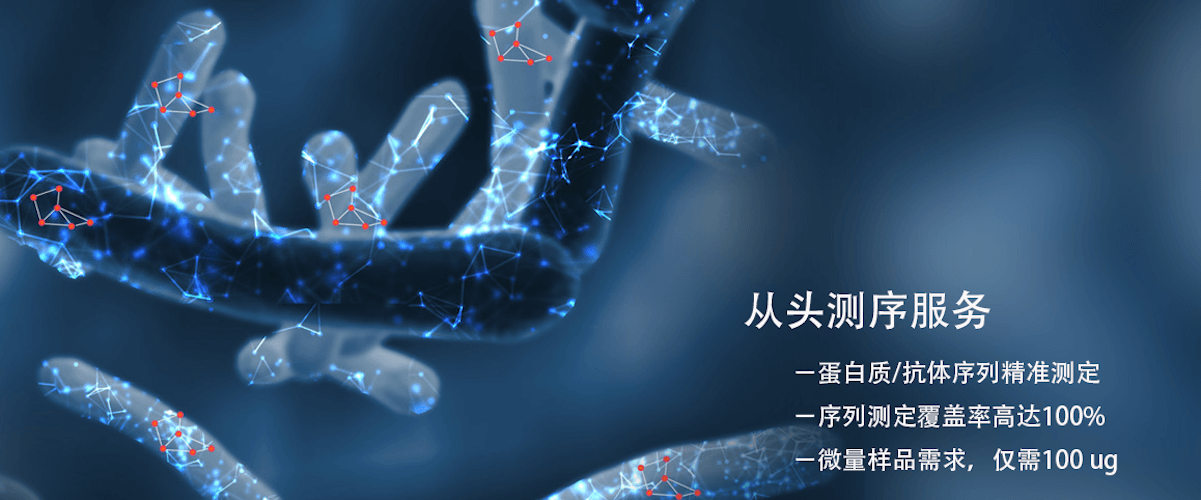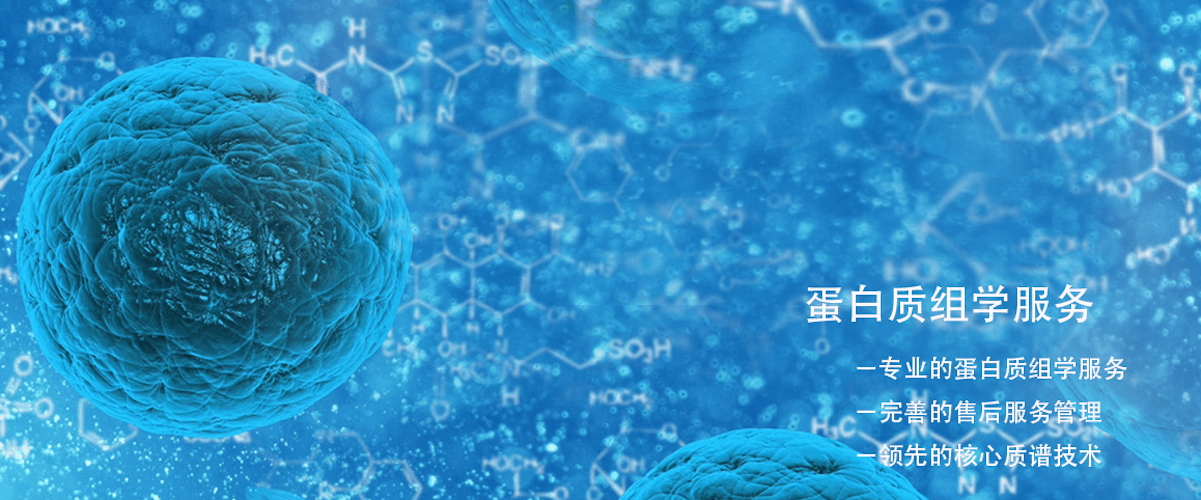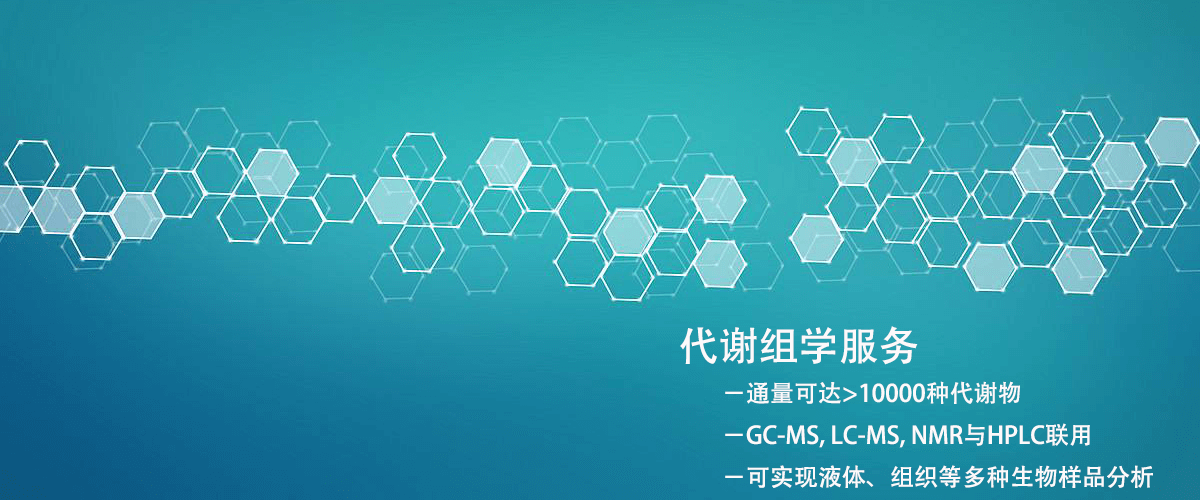Label-based Protein Quantification Techniques - iTRAQ, TMT, SILAC
Relative and Absolute Quantification Isobaric Tags (iTRAQ)
iTRAQ is a quantitative proteomics research technology developed by AB SCIEX in 2004. This technology allows for the comparison of protein levels across many different samples. For instance, it can be used to study differences in protein expression levels in tissue samples under different pathological conditions or developmental stages. iTRAQ can accurately quantify and identify all proteins expressed in a genome or in a complex mixture system. It can use 8 different isotopic reagents to simultaneously label and compare 8 different protein samples. The labeling reagents consist of a reporter group, a balance group, and an amine-specific reaction group.iTRAQ Workflow
The general process of iTRAQ technology is illustrated in the diagram below. Briefly, after the sample is cleaved by trypsin, it is alkylated and digested into peptides. The resulting peptides are differentially labeled using iTRAQ reagents, and the labeled samples are mixed together for LC-MS/MS analysis.
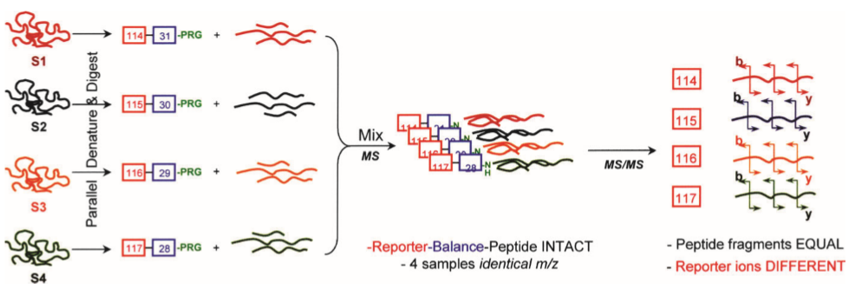
General scheme for multiplex reactions of four different samples (S1-S4), represented in four different colors (Zieske et al., 2006)
Advantages of iTRAQ
1. iTRAQ can simultaneously label 4 to 8 samples in one experiment. It is simple and quick to operate, suitable for high-throughput detection of multiple samples, and offers more flexible experimental design.
2. iTRAQ performs in vitro labeling at the peptide level, making it applicable to many types of biological samples.
3. iTRAQ is characterized by good reproducibility and high sensitivity, allowing for simultaneous qualitative and quantitative analysis.
Tandem Mass Tags (TMT)
TMT is a peptide in vitro labeling technology developed by Thermo Fisher Scientific. This technology can use up to 10 isotopic tags to label amino groups of peptides. After LC-MS/MS analysis, it can simultaneously compare the relative abundance of proteins in 10 different samples. TMT is widely used in areas such as disease biomarker screening, drug target identification, disease resistance or stress mechanisms in plants and animals, and development and differentiation mechanisms in plants and animals.TMT Workflow
The general process of TMT is illustrated in the diagram below. Different protein samples are denatured, reduced, alkylated, and digested into peptide samples. These peptide samples are then labeled with TMT kits and combined into one sample. The combined sample is separated using HPRP liquid chromatography, and the fractions are tandemly grouped into 12 samples. After purification, each sample is analyzed by HPLC-MS. The data is analyzed to obtain qualitative and relative quantitative information of proteins.
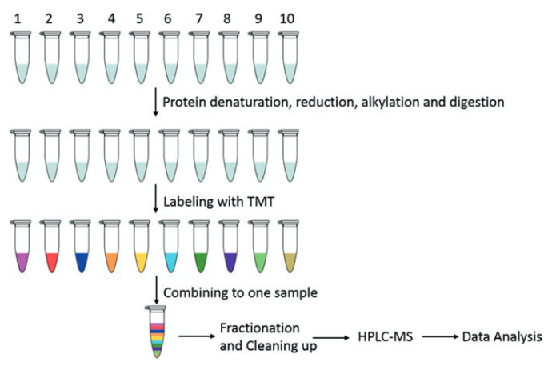
Relative quantification using 10plex TMT (Zhang et al., 2017)
Advantages of TMT
1. High sensitivity: capable of detecting low-abundance proteins;
2. Strong separation capability: can separate acidic/basic proteins, proteins smaller than 10KD or larger than 200KD, insoluble proteins, etc.;
3. Wide application range: can identify any type of protein, including membrane proteins, nuclear proteins, and extracellular proteins;
4. High throughput: can simultaneously analyze 10 samples, particularly suited for differential protein analysis of samples subjected to multiple treatment methods or time points.
Stable Isotope Labeling with Amino Acids in Cell Culture (SILAC)
SILAC is an effective protocol for high-throughput quantitative proteomics, designed based on the principle of mammalian cell proliferation dependent on essential amino acids. SILAC is used in quantitative proteomics research to analyze protein interactions and expression differences in cells, providing an effective solution for comprehensive and systematic qualitative and quantitative analysis of complex mammalian cell proteomics.SILAC Workflow
The general process of SILAC is illustrated in the diagram below. Light, medium, or heavy stable isotope-labeled essential amino acids (mainly lysine and arginine) are added to the cell culture medium. Through normal cell metabolism, all newly synthesized proteins are labeled with stable isotopes. Equal amounts of all types of proteins are mixed, separated by SDS-PAGE, cut from gel, and digested with enzymes. LC-MS/MS analysis can then be used to obtain quantitative and qualitative results of relevant proteins.
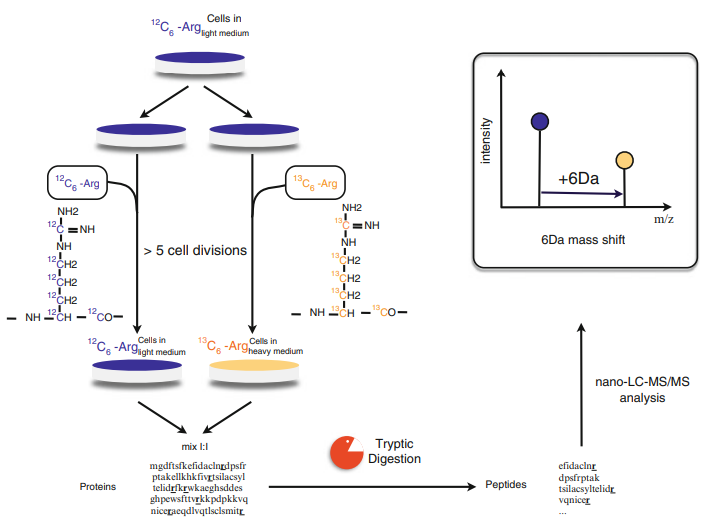
Protein quantification using SILAC (Esthelle et al., 2019)
Advantages of SILAC
1. SILAC is a live-cell level labeling technology. The labeling effect is stable and effective, and the labeling efficiency is not affected by the lysis solution.
2. SILAC requires less sample, typically only a few tens of micrograms of protein per sample is sufficient.
3. SILAC uses mass spectrometry to simultaneously identify and quantify multiple proteins.
4. SILAC uses in vivo labeling technology, closely resembling the real state of the sample.
References
1. Zieske Lynn R. A perspective on the use of iTRAQ reagent technology for protein complex and profiling studies. Journal of Experimental Botany, 2006, 57(7):1501-1508.
2. Lichao Zhang, Joshua E. Elias. Relative Protein Quantification Using Tandem Mass Tag Mass Spectrometry. Methods in Molecular Biology, 2017, 1550:185.
3. Esthelle Hoedt, Guoan Zhang, Thomas A. Neubert. Stable Isotope Labeling by Amino Acids in Cell Culture (SILAC) for Quantitative Proteomics. Adv Exp Med Biol. 2014, 806:93-106.
Related Services
Quantitative Proteomics Analysis
4D Proteomics
Label-Free Quantitative Proteomics Analysis
TMT/iTRAQ/MultiNotch Quantitative Proteomics Analysis
TMT-Based Proteomics Analysis
SILAC/Dimethyl Labeling-Based Quantitative Proteomics Analysis
SWATH Quantitative Proteomics Service
DIA Quantitative Proteomics
2D-DIGE Quantitative Proteomics
Targeted Proteomics
MRM/PRM Quantitative Proteomics Analysis
Absolute Quantification Analysis (AQUA)
Post-Translational Modification Proteomics Analysis
Proteomics Bioinformatics Analysis
How to order?


